SOLIDWORKS Simulation 2026 - What's New
SOLIDWORKS Simulation 2026 delivers some exciting new features and enhancements for shell definition and edge selection, better setup feedback information, performance improvements for connectors, and more.
Shell Edges
A remote load is an effective method for applying a load from a large hydraulic cylinder. Up until now, it’s been restricted in where it could be applied. New in SOLIDWORKS Simulation 2026, remote loads and remote masses can be applied directly to shell edges when you are using the Define Shell by Selected Faces option.

For engineers analyzing sheet metal or thin plate structures, this makes it much easier to replicate real-world loading conditions.
Simulation Setup Feedback
Clear error messages are invaluable when defining simulations, and the more information provided in them, the better. In SOLIDWORKS Simulation 2026, error messages for missing materials and mesh failures now specify the body or bodies missing a material definition or failing to mesh.
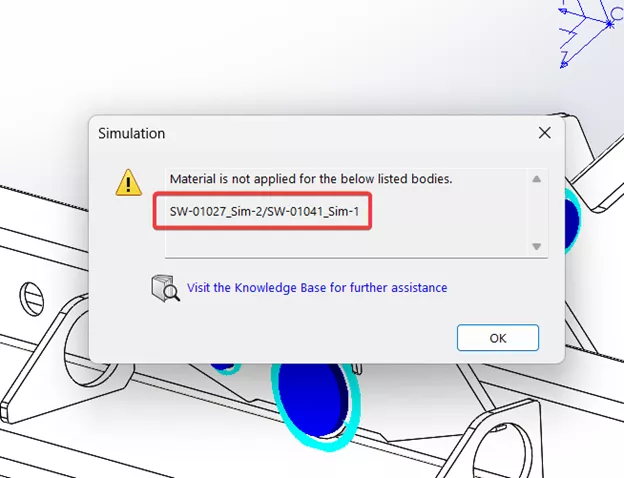
This speeds up the study creation, eliminating the need to search through the simulation tree to locate issues.
Angular Rotation
New in SOLIDWORKS Simulation 2026, Angular Rotations can now be plotted as radians or degrees. This plot type is available in studies containing solids, shells, or beams, but is not available in mixed meshes.
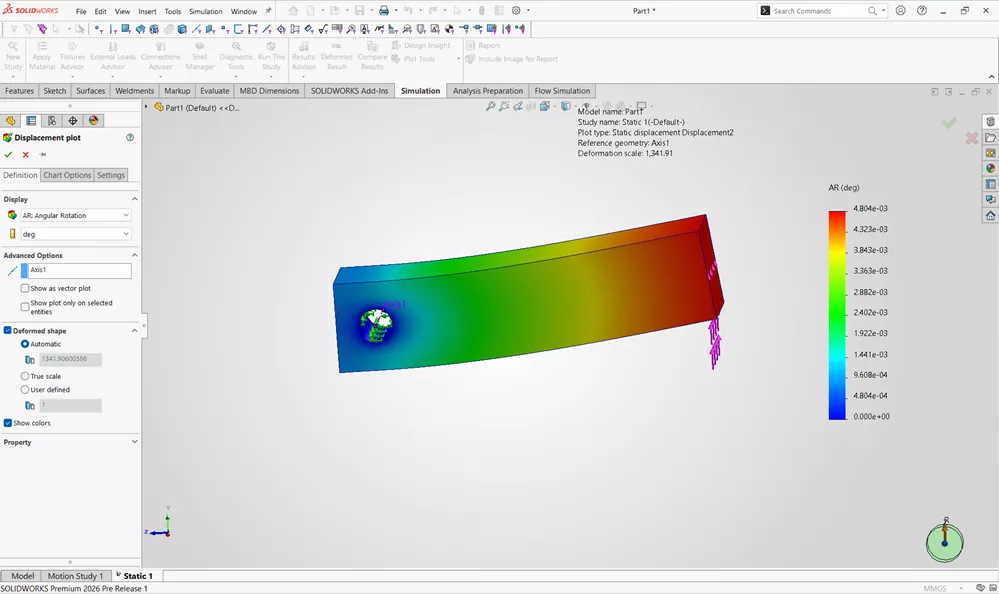
It will display the angular rotation relative to an axis. This allows for a clear and precise way of understanding the deformation present in a study.
Shell Definitions
Next, the shell definition process has been improved. An option is now available to globally decide whether thick or thin shells will be defined by default in new studies.
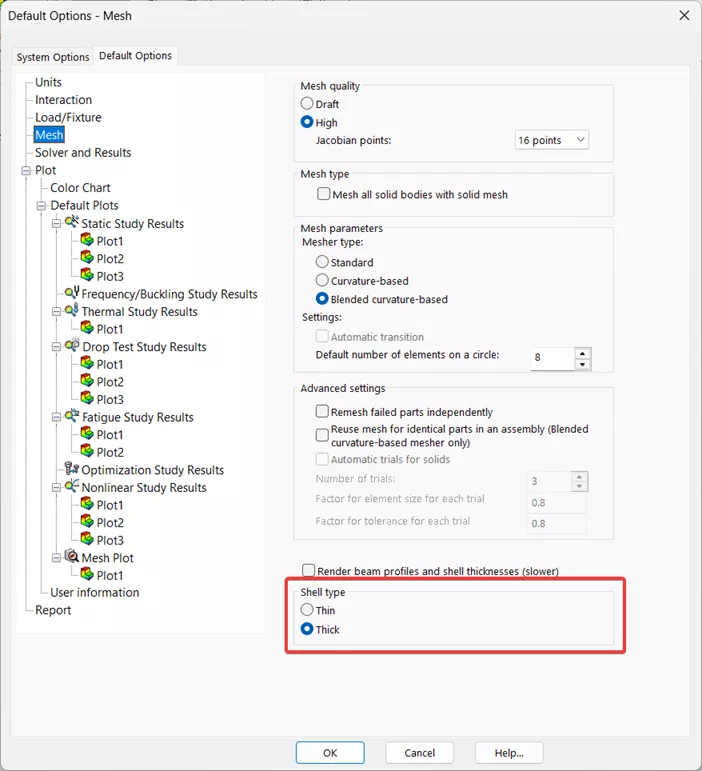
This results in faster study creation when regularly working with thick shells.
Pin Connector Forces for Random Vibration
New in Simulation 2026, it is now possible to view connector forces from a pin connector being used in a random vibration study. This will also allow you to view a response graph showing resultant forces across the entire range of vibration.
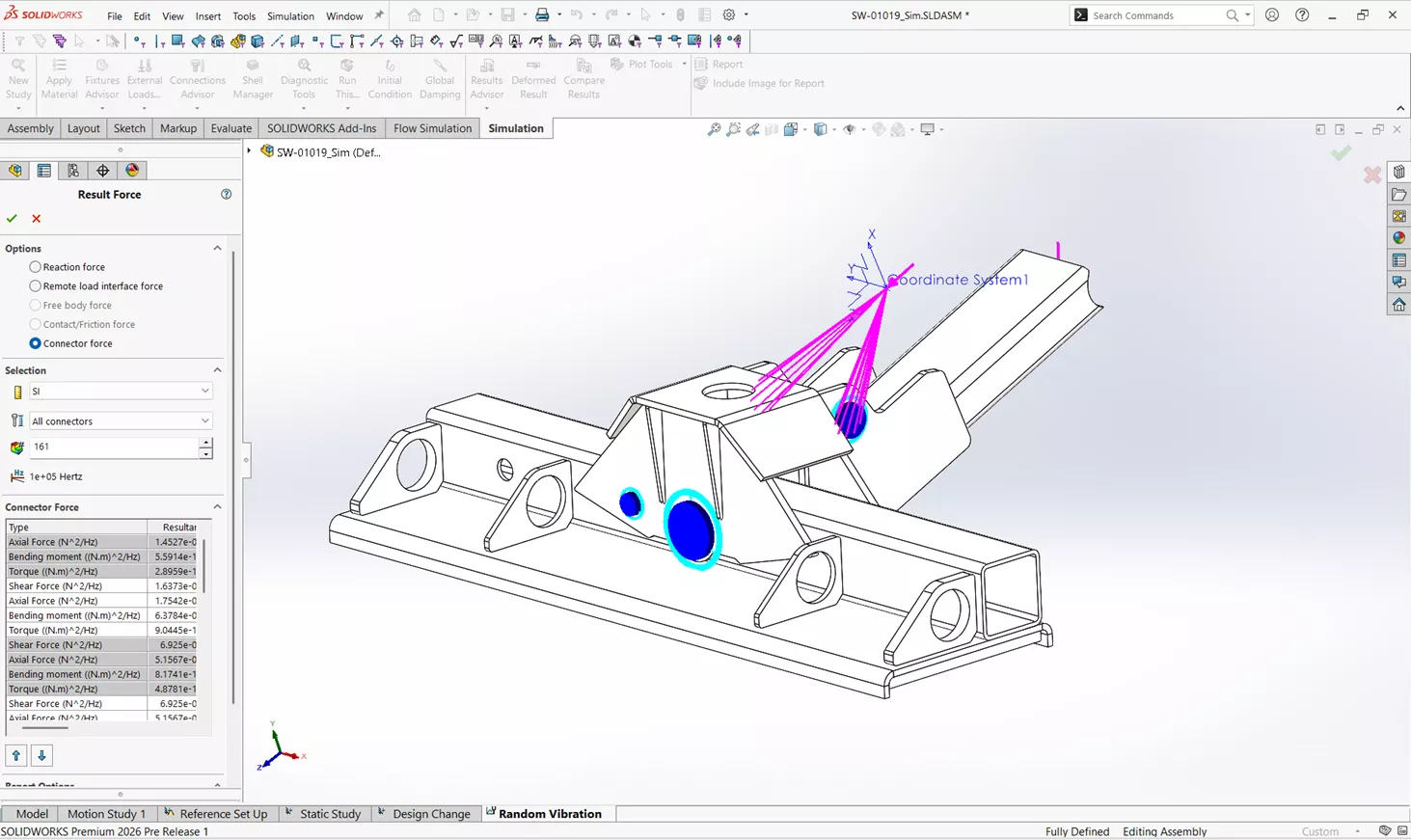

Force Loads for Beams
Beam meshes can simplify complicated structures, and they save a tremendous amount of processing time. In the past, there were limitations to only being able to apply a force as a per item load. Now, in Simulation 2026, the ability to apply total force spread across multiple beams is available. When setting the load value to be per unit length, the load type will automatically switch back to per item if it was set to total.
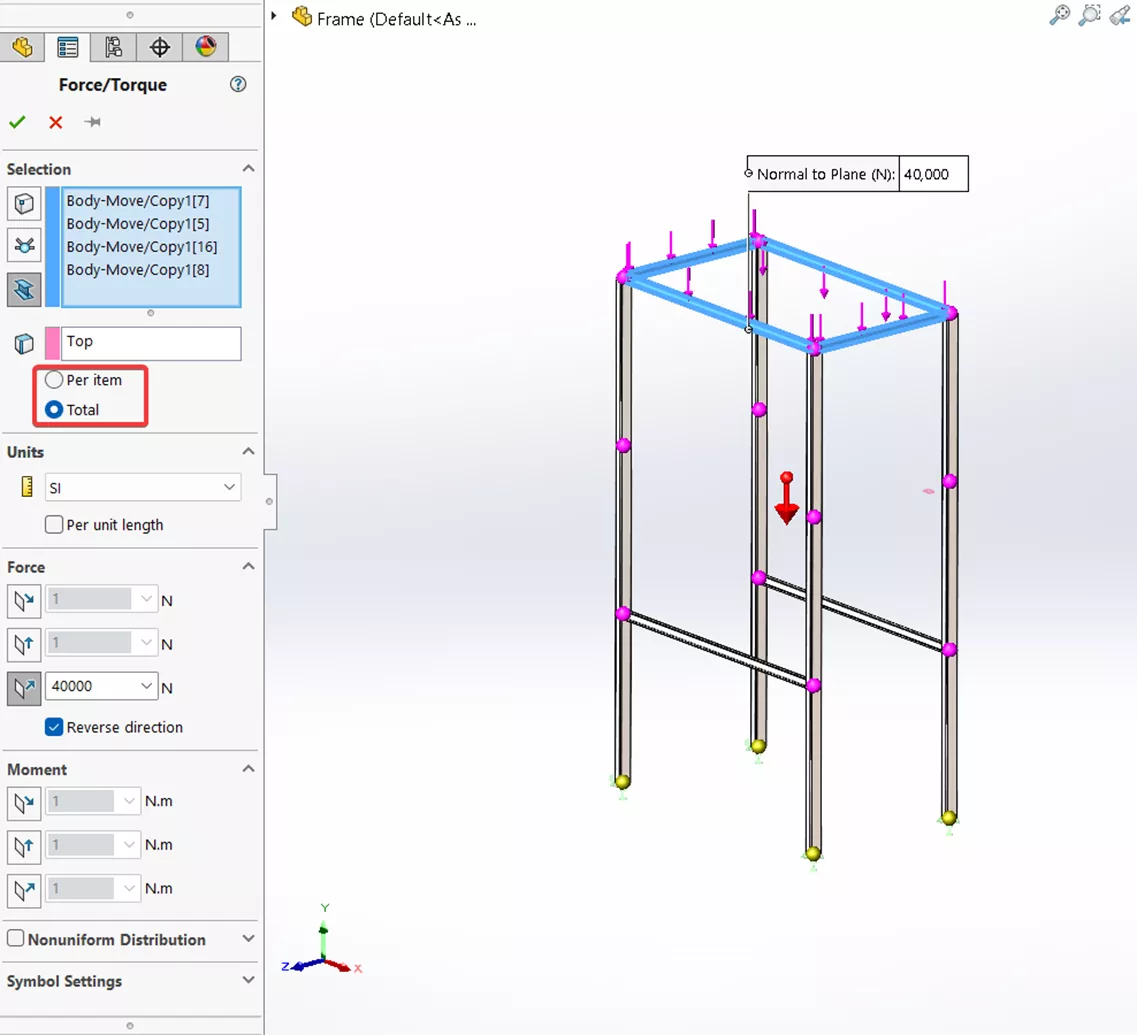
This easier definition of loads spread across multiple beams saves time and removes a possible source of error.
Seismic Response Studies
Response spectrum analyses are a great way to analyze the seismic response of a structure. In SOLIDWORKS Simulation 2026, remote masses can now be included in the response spectrum analysis.

This enhancement dramatically increases performance by allowing complex bodies to be simplified and treated as masses, rather than requiring the geometry to be part of the study.
Buckling Modes
Buckling is always a concern when working with structures. The buckling analysis evaluates the likelihood of buckling and includes a factor of safety to clearly show the load at which a structure is likely to buckle. In Simulation 2026, the results become even clearer with the ability to filter out negative buckling load factors to only show real risks of failure.
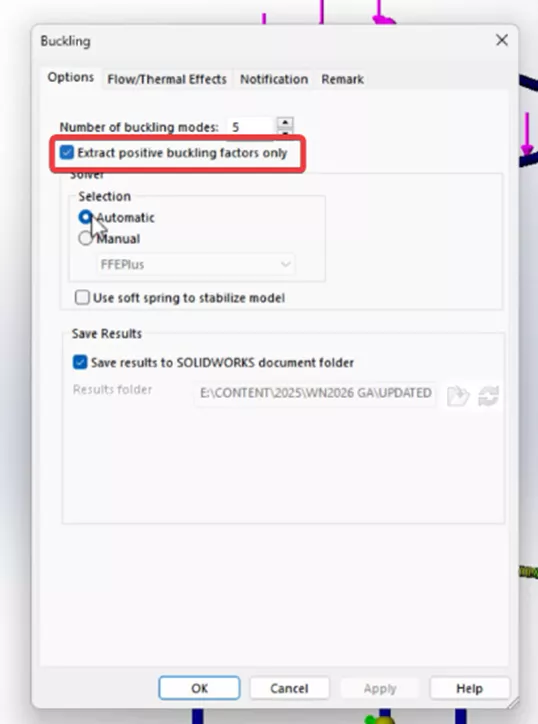
With this new feature, you can automatically filter out modes that pose no risk of failure and focus on what could actually be a concern.
Performance Improvement for Connectors
Distributed coupling is a great way to accurately and efficiently model connectors like bolts, rods, and bearings. Distributed coupling performance has been improved in SOLIDWORKS Simulation 2026, resulting in up to 28% solve time reduction over last year.
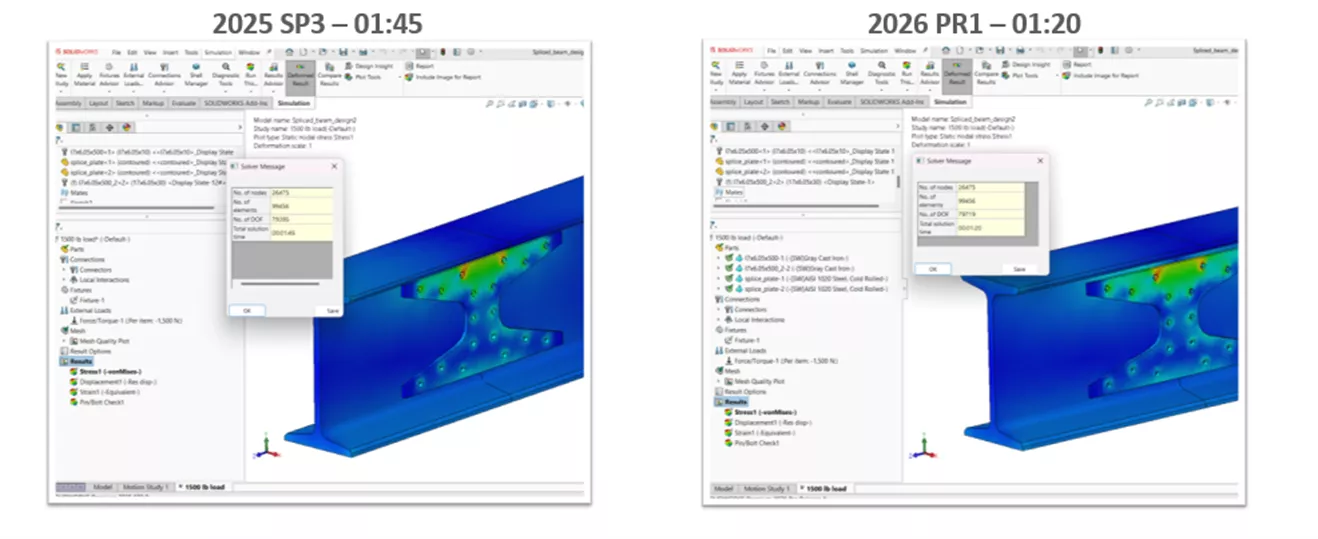
Beyond performance improvements, connectors have been made more robust, allowing more face facets to be connected by the connectors, uncapping the previous coupling limit of 800 facets.
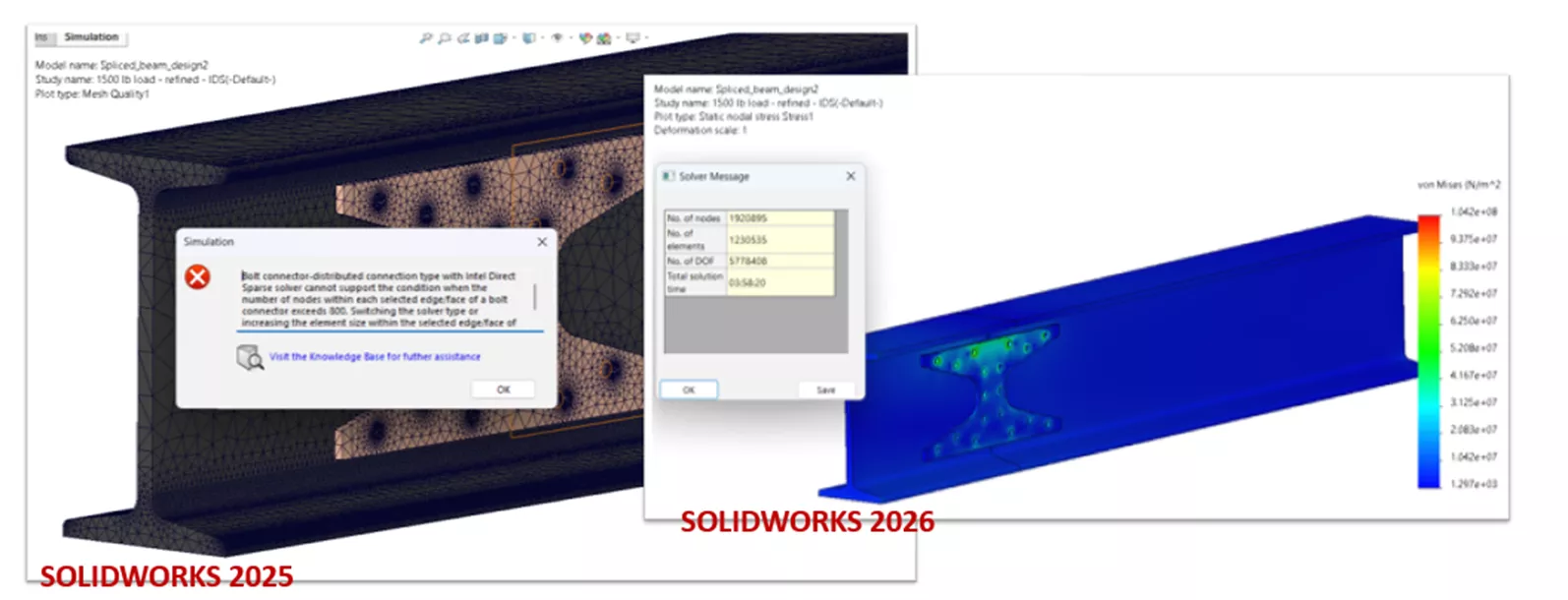
This allows for larger and more complex problems including fasteners to be analyzed.
That's a wrap for what's new in SOLIDWORKS Simulation 2026. Check out the rest of our SOLIDWORKS 2026 What’s New series for more updates across the SOLIDWORKS platform.
Related Articles
SOLIDWORKS 2026 UI/UX, Performance & Imports - What's New
SOLIDWORKS 2026 Drawings - What's New
SOLIDWORKS 2026 Assemblies - What's New
SOLIDWORKS 2026 Parts and Features - What's New
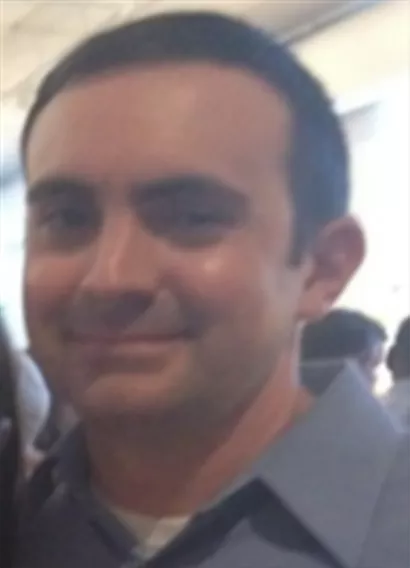
About Nick Pusateri
Nick Pusateri is a Senior Simulation Specialist at GoEngineer. He has a Bachelor of Science degree in Mechanical Engineering from UMSL/Wash University of Missouri. Nick enjoys learning about different tools of SOLIDWORKS Simulation, Abaqus, and 3DEXPERIENCE SIMULIA.
Get our wide array of technical resources delivered right to your inbox.
Unsubscribe at any time.